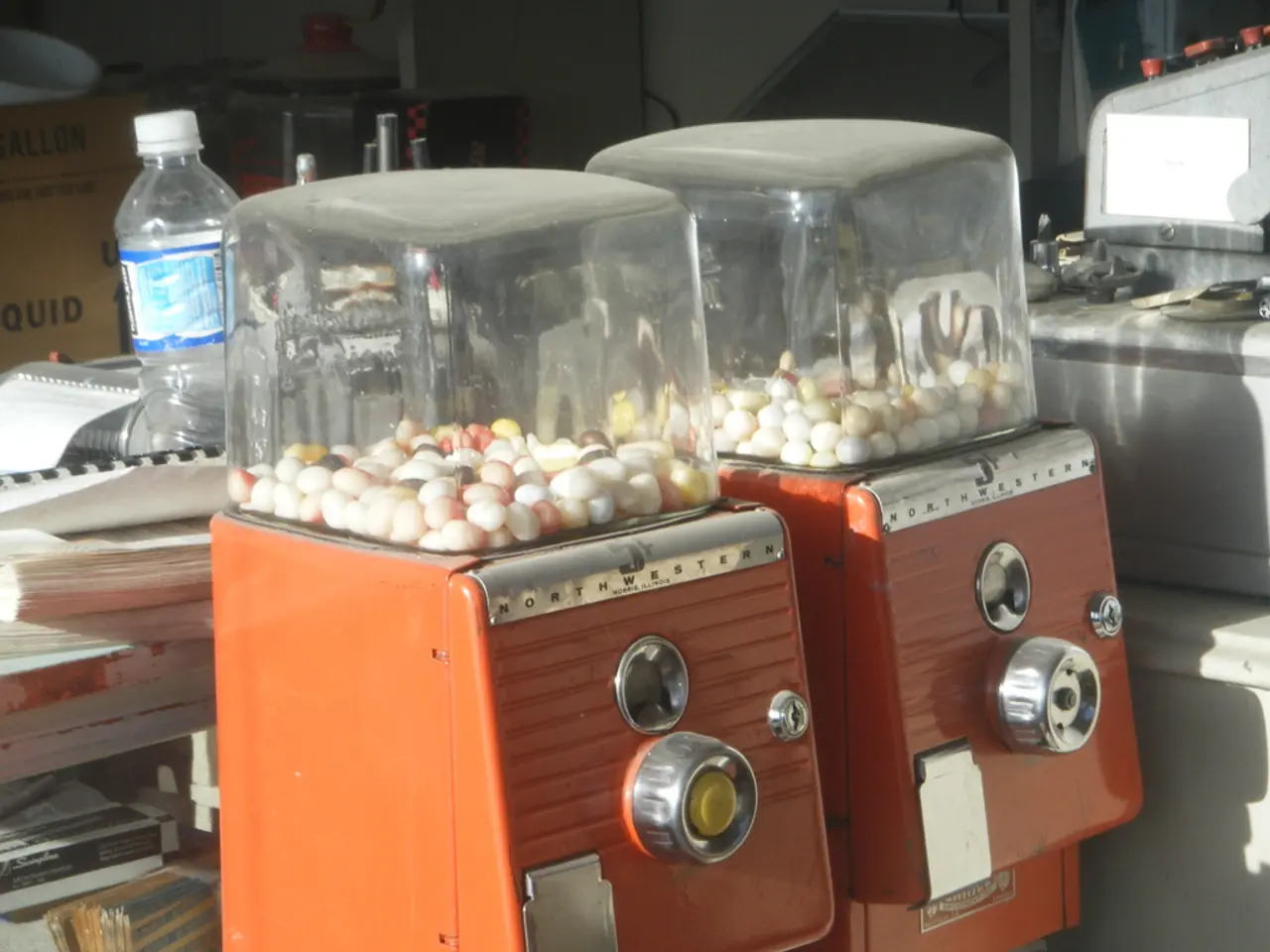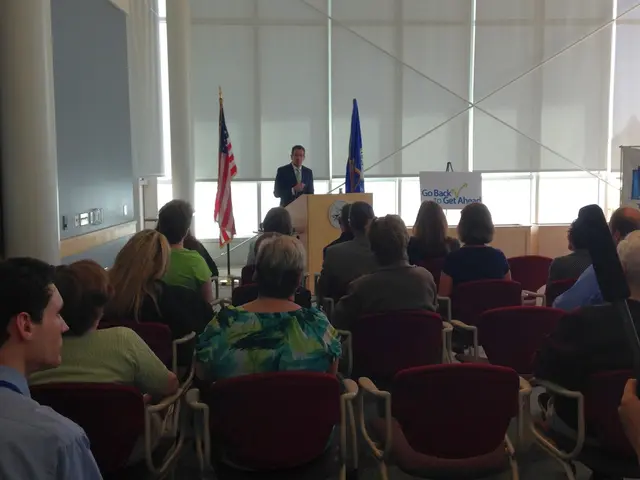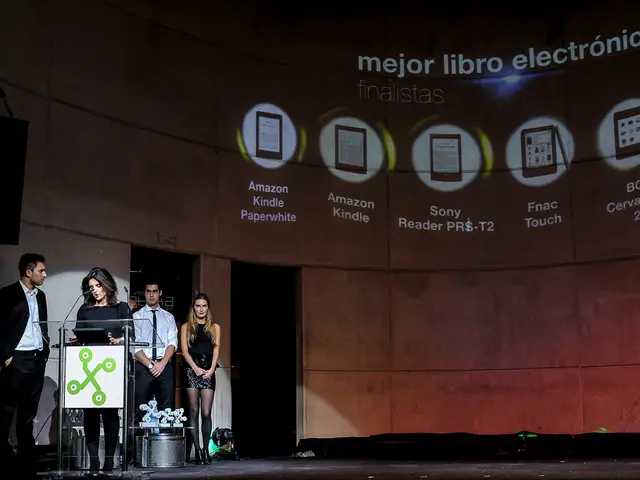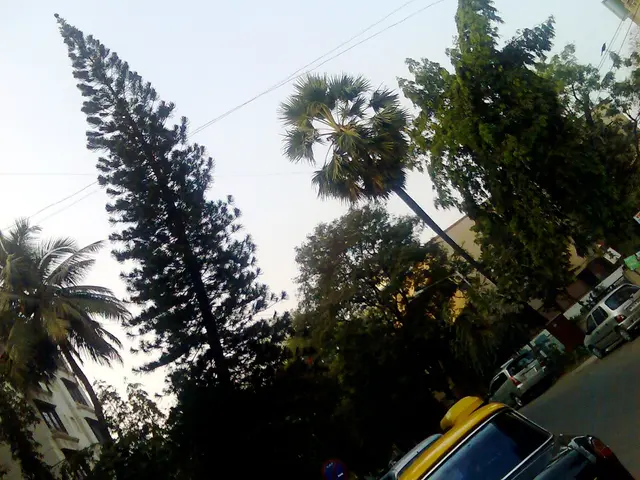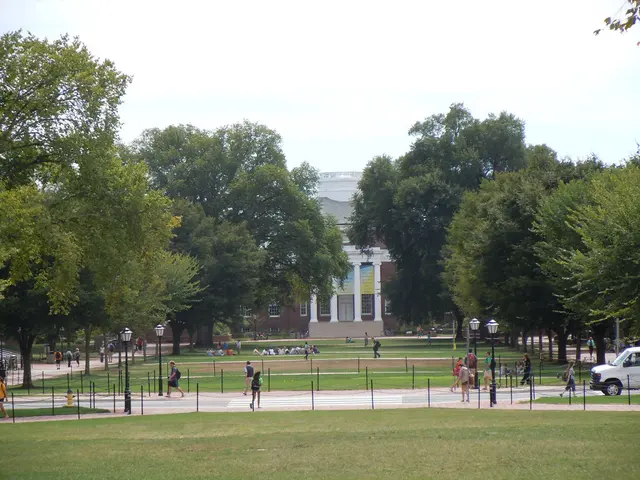Experiment on Melting Candy Canes
In a fun and engaging science experiment, a group of children recently set out to discover which liquid causes a candy cane to dissolve the fastest. The experiment, designed to stimulate scientific thinking and problem-solving skills, involved three jars or glasses containing water, milk, and juice.
Each participant made a prediction about which liquid would cause the candy cane to dissolve the fastest. The children's anticipation filled the air as they unwrapped their candy canes and placed them in the jars.
The candy cane in the water started to dissolve immediately, while the one in the juice was the slowest to dissolve. The candy cane in milk was harder to observe due to its opacity, but it too eventually began to dissolve at a faster rate than initially anticipated.
As the candy canes dissolved, the children could observe the process layer by layer. The experiment provided a hands-on lesson in solubility and chemical changes, as the minty flavour of the candy canes infused the liquids.
Once the candy canes had completely dissolved, the participants sampled the liquids. To their delight, the mint-flavoured juice-candy cane science experiment was a success, as everyone enjoyed the taste of the resulting liquid.
If you're looking for more exciting science experiments for kids, look no further! The Candy Cane Science Experiment is just one of many engaging activities that use simple household materials to teach kids about solubility, chemical reactions, surface tension, and other scientific principles.
For example, the Skittles Rainbow experiment demonstrates how solubility works by arranging Skittles in a circle on a plate and pouring warm water in the middle. The Baking Soda and Vinegar Reaction showcases an acid-base chemical reaction with bubbles, while the Magic Milk Experiment illustrates surface tension and chemical interactions.
The Lava Lamp Experiment demonstrates immiscible liquids and gas formation, Paper Towel Chromatography shows how molecules move and separate in a solution, and the Invisible Ink experiment combines chemistry and writing.
Finally, the Sugar Cube Tower experiment explores concepts of absorption and material stability by building towers with sugar cubes and testing how water affects the structure.
These activities are not only fun but also educational, providing a great way to engage children in the world of science. So why not give them a try and watch your little scientists in action?
For more science experiments for kids, visit the Super Cool Science Experiments for Kids page. Happy exploring!
The science experiment with candy canes led to discussions about solubility and chemical changes in daily life. This demonstrates that learning about science can be enjoyable and practical, as seen in the health-and-wellness aspect of tasting the resulting liquids. In the realm of education-and-self-development, similar experiments might foster understanding in various scientific principles, like surface tension, acid-base reactions, and immiscible liquids. Technological advancements also play a role in learning, with online resources like Super Cool Science Experiments for Kids offering additional interactive activities, such as the Paper Towel Chromatography, to further engauge children in the science-and-fitness-and-exercise of exploration. Home-and-garden activities, like the Sugar Cube Tower experiment, can also teach children about absorption and material stability, proving that scientific knowledge can be integrated into various aspects of lifestyle.
